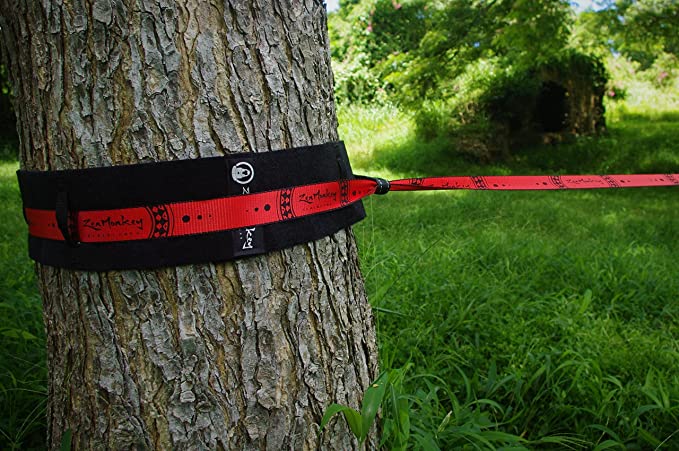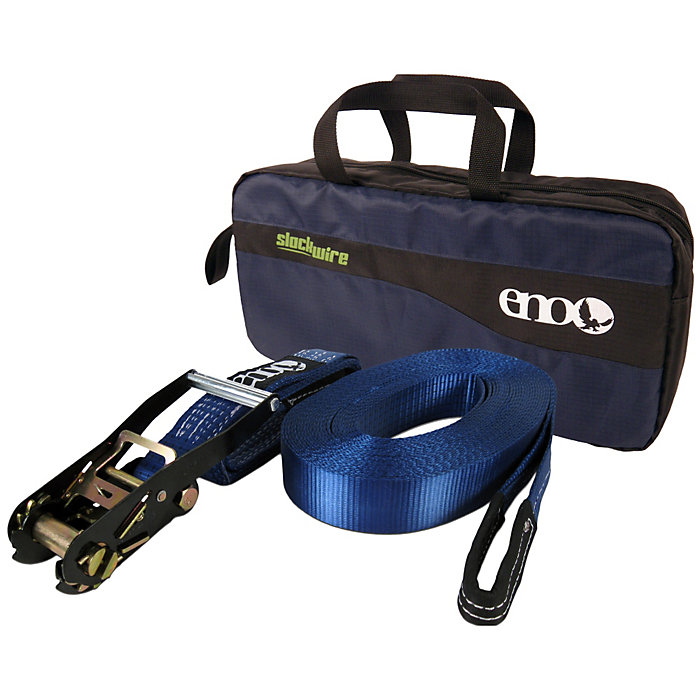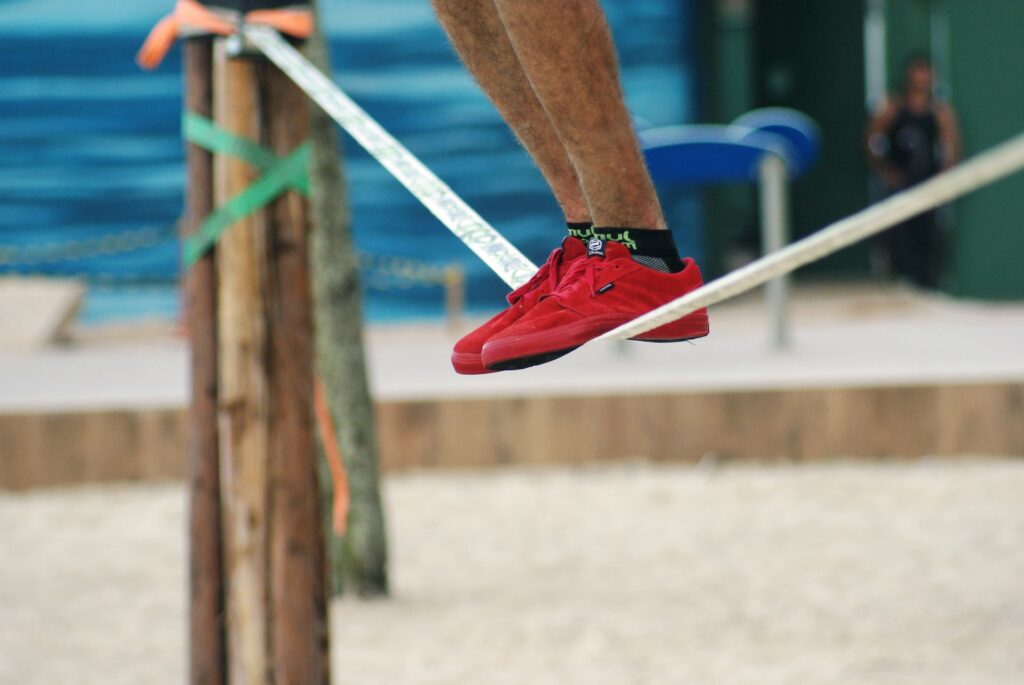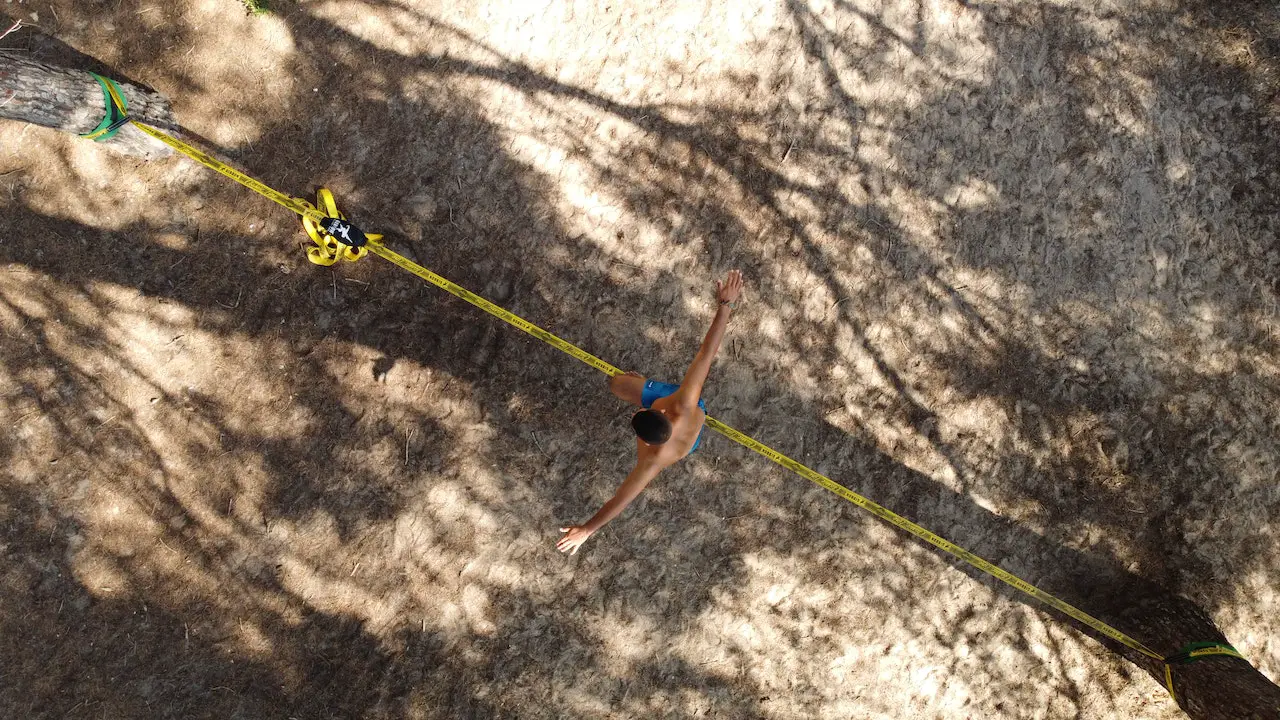Slacklining is a funny hobby for people of all ages looking to improve their balance, spend time with friends and have fun outdoors!
What is slacklining?
Slacklining is a recreational activity that involves walking or balancing on a narrow, flexible line or strap that is anchored between two points.
It is similar to tightrope walking, but the line is not as taut and has a certain amount of give or slack, which makes it a bit more challenging and dynamic.
Slacklining can be done for fun, as a form of exercise, or as a way to improve balance, core strength, and focus.
It is often done in outdoor settings, such as parks or forests, but can also be practiced indoors with the use of specialized slackline kits.
Be sure to use best practices when setting up your slackline and use a towel or tree protector when anchoring to a tree during set up!

How do you slackline?
To slackline, start by standing on the line with your feet hip-width apart and your knees slightly bent. As you walk forward, keep your core engaged and your body centered over the line. Use your arms to help balance, and take small, controlled steps.
Try to focus your eyes on a fixed point in the distance or at the anchor you are walking towards.
This will help you focus and keep your balance and you wobble and sway through your first steps. It may take some practice to get the hang of it, but with time and patience, you’ll be able to walk the slackline with ease.

What are the benefits of slacklining?
Slacklining is a great way to improve your balance, coordination, and core strength.
It can also be a fun and exciting activity to do with friends and family.
If you’re interested in taking your slacklining to the next level, you can try different tricks and challenges, such as walking along the line backwards or trying to do a handstand on the line.

Is slacklining safe?
Slacklining can be a safe activity when done properly and with the appropriate safety measures in place.
It is important to use a slackline that is in good condition and has been set up correctly, with the appropriate amount of tension and secure anchor points.

Never set up your slackline over concrete or other hard surfaces, and always make sure the line is anchored securely before using it. Slacklining over sand, soft grass or padding is recommended for soft landings.
It is also a good idea to have a spotter nearby who can assist you if needed. Overall, as long as you take the necessary precautions and use common sense, slacklining can be a safe and enjoyable hobby.
With practice and patience, you’ll be a pro slackliner in no time!

